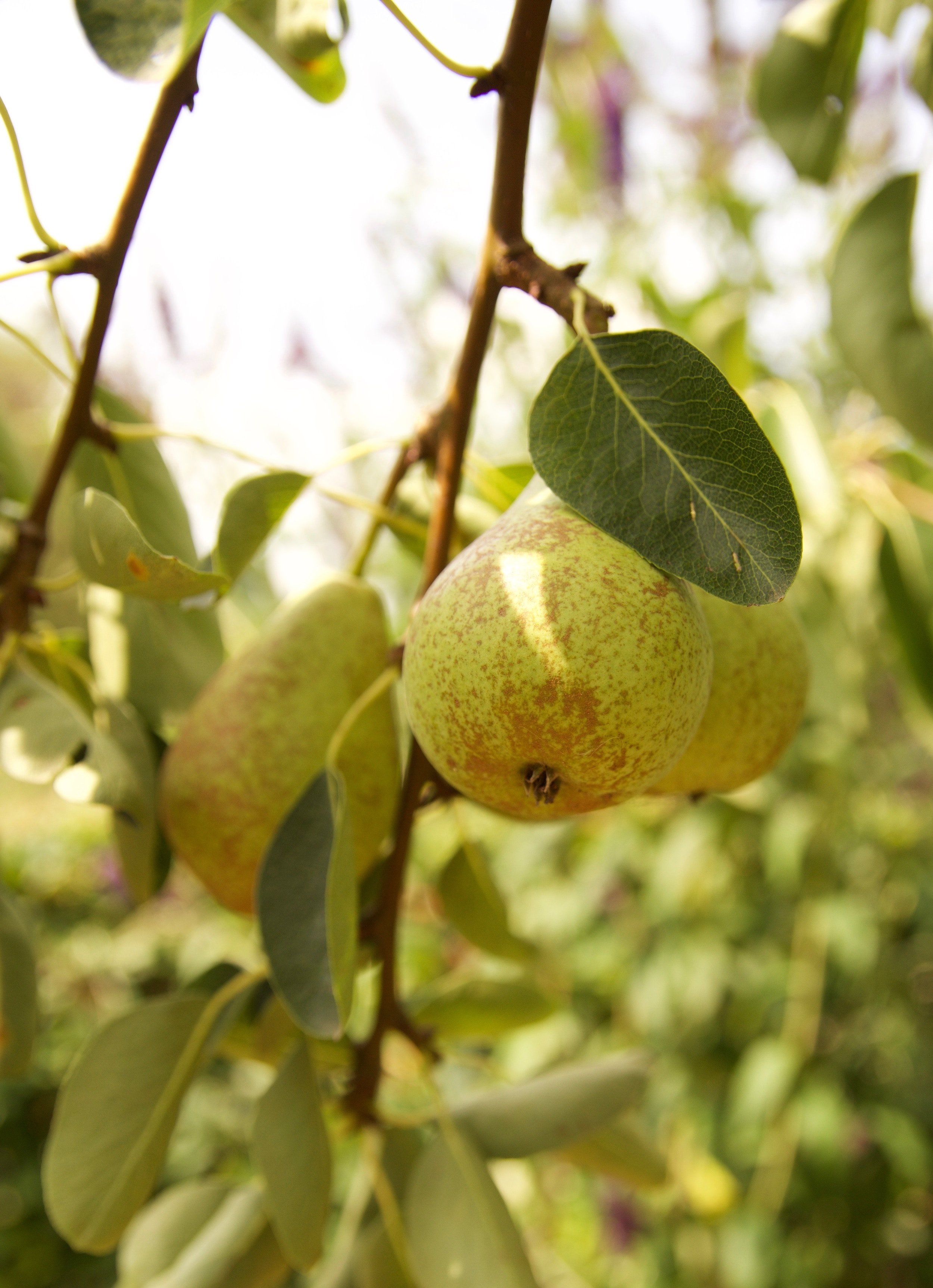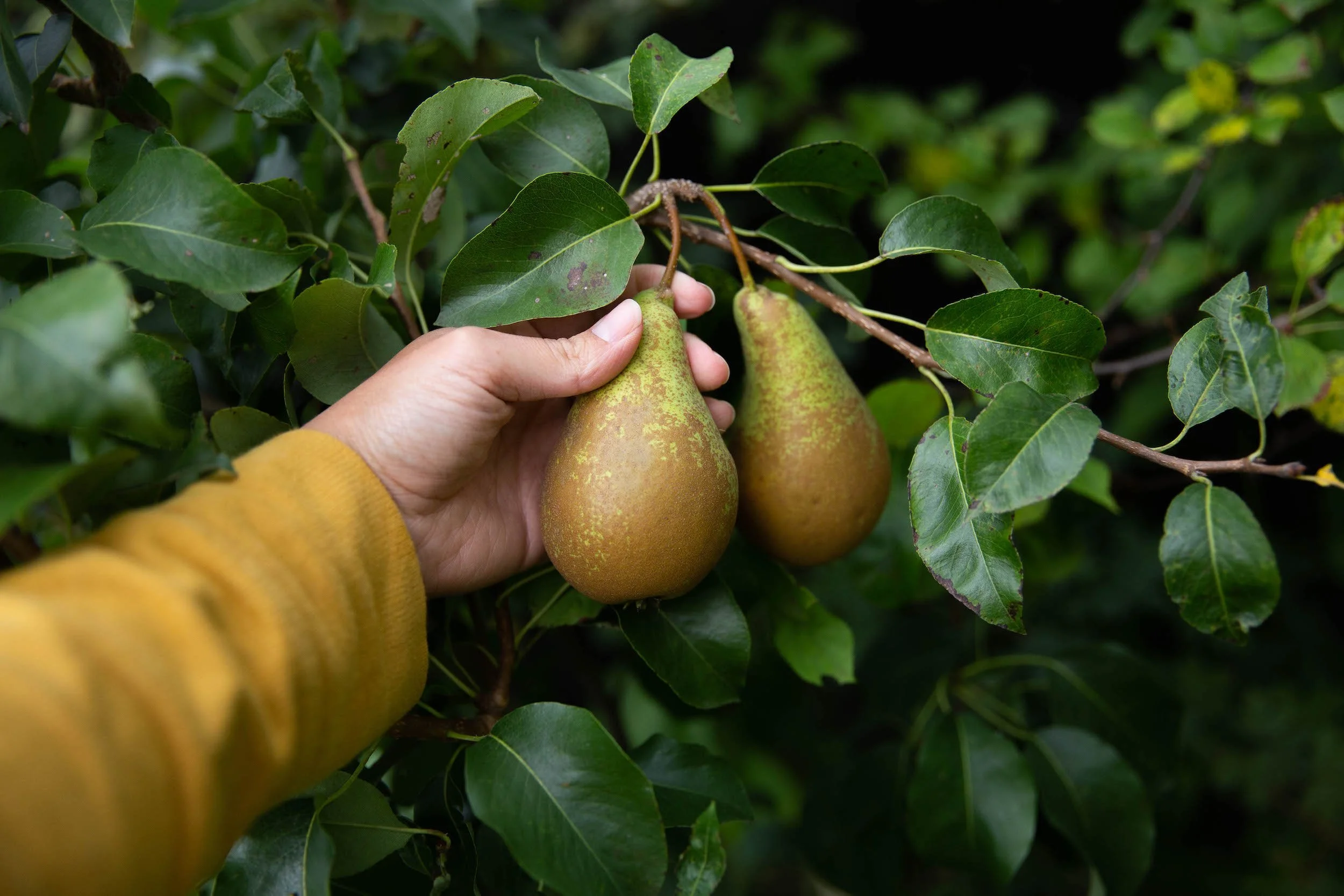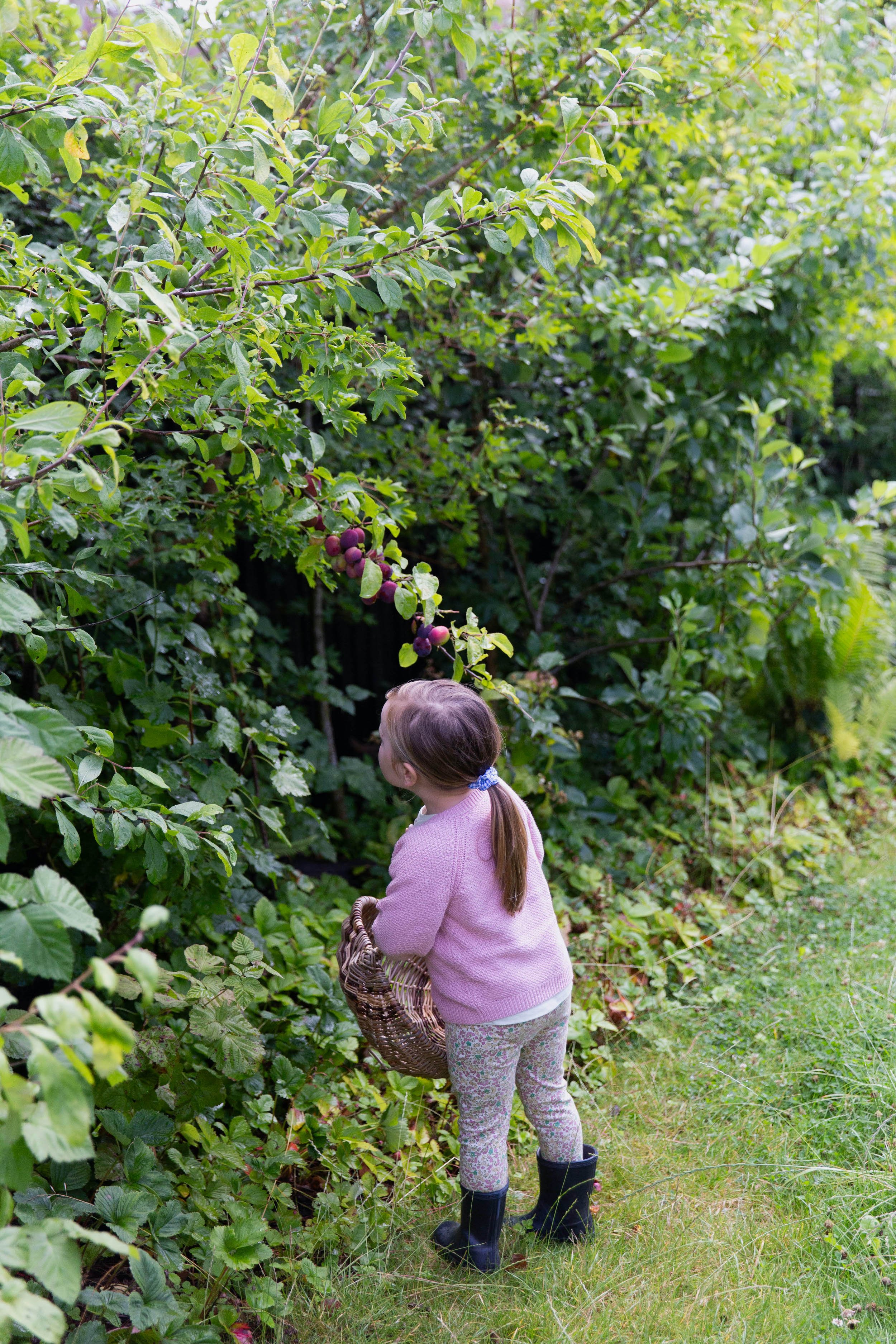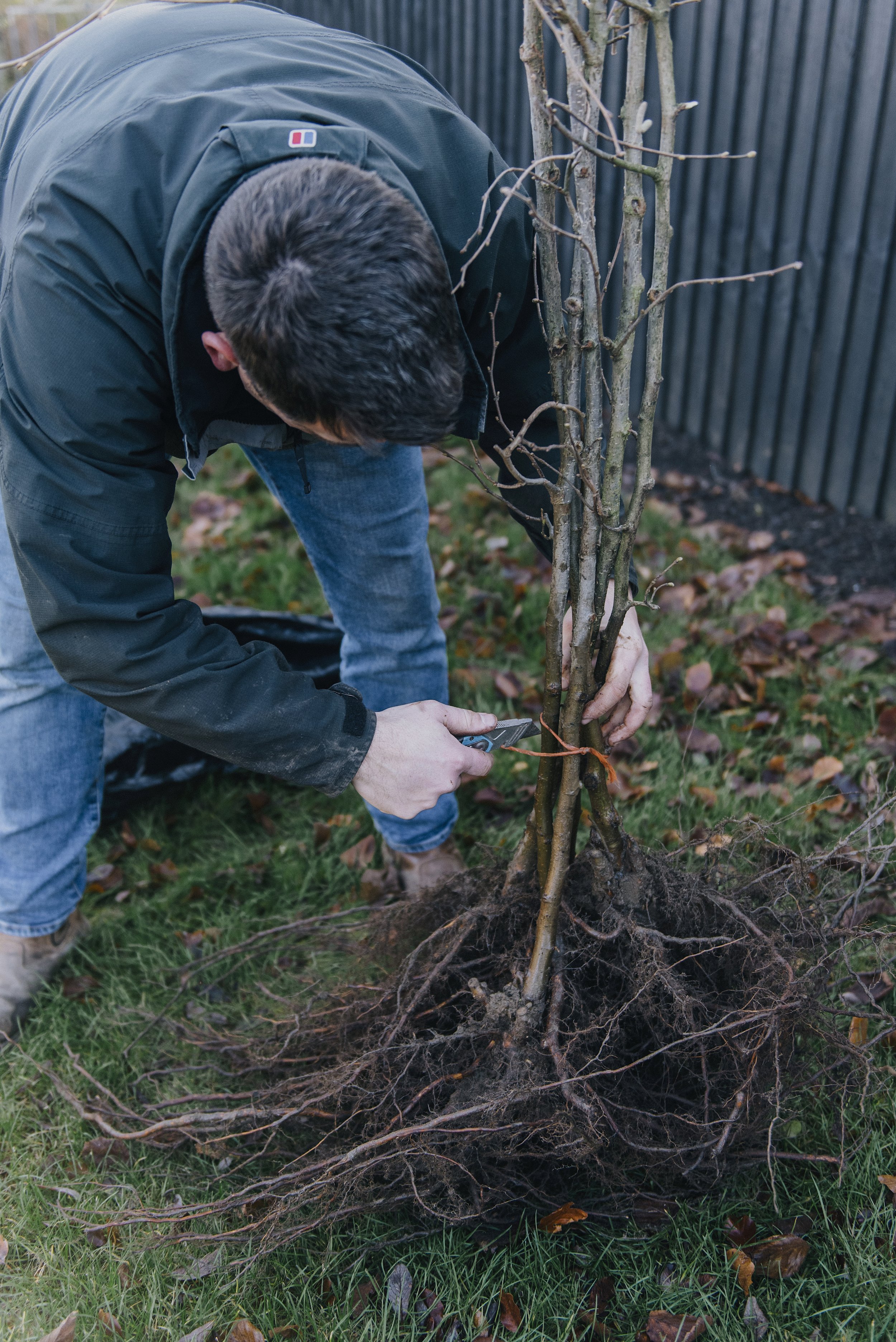Plant guide: pear trees
With a froth of blossom in the Spring, and delicious fruits in Autumn, pear trees add a huge amount to the garden, and we like to include a tree or two wherever we can!
Growing well in native UK conditions, pear trees come in all shapes and sizes, from small trees perfect for pots, trees that can be espaliered against walls, to larger varieties that can stand alone in the middle of a lawn. Though fruit trees sometimes have a reputation of being fairly high maintenance (and they do undeniably need regular pruning and care to keep them cropping at their best) we always think it’s worth a little extra effort for the delight of biting into a freshly picked pear from a tree in our own garden.
Botanical name: Pyrus communis
Plant type: Deciduous fruit tree.
Growing conditions:
Pear trees grow best in a sunny, sheltered spot, away from winds. They need fertile, well-draining soil (roots can tend to rot in water logged positions, so dig through plenty of organic matter and sand, if you have heavy soil, or consider growing a smaller variety in a pot…)
Pear trees can grow especially well against a wall: espaliered on an old red brick wall is perfection! They don’t need this extreme level of care to thrive though, but a sunny position ensures good fruiting, and protection from winds means the blossoms are unlikely to be blown off the tree.
Pear trees come on different rootstocks, to restrict their eventual growth and size. Choose smaller rootstocks if you have smaller spaces. In our edible hedge, we have used pear trees that are grafted onto Quince C rootstocks. These grow up to about 2.5-3m eventually, though can be kept shorter with pruning. Quince A rootstock is also common, which grow to a slightly larger height of around 3m.
Most pear trees need to be pollinated by another pear. Include two different varieties in your garden to ensure cross pollination, or check neighbouring gardens to see if there are any other close by pear trees! A few varieties are self-fertile, meaning that they should fruit on their own, however, even these tend to do best when cross-pollinated.
Grow with:
Pears can be grown as a standalone tree, for example in the middle of a lawn, or as a specimen tree in a border. We have pears growing in our garden as part of our edible hedge, where they add to our Autumn fruit harvest!
How to plant:
Plant pear trees in the dormant season, from Autumn through to Spring. You can plant them any time the ground isn’t waterlogged or frozen.
We prefer planting bare root trees (trees that have been grown in open ground, rather than a container, and are then dug up for sale) as they are cheaper to buy and tend to establish quicker than container grown plants. Blackmoor is our favourite nursery for all fruit trees.
Soak the roots well before planting. Dig a hole to the depth of the roots, and twice as wide. Hold the tree in place – it helps to have two people to do this – and turn it round to get the most attractive shape of the tree facing out if necessary. Hold in place, ensuring it is straight upright, while the other person fills the hole and gently firms the soil in place. See our guide to planting bare root trees for more detailed information.
Water in well.
Harvesting:
Pears ripen in the Autumn, from around September onwards. Pick when the pear falls from the tree when gently twisted. Pears ripen best off the tree, so pick when still firm to touch, and allow to ripen indoors.
Uses:
As with apples, there are pears for eating and pears for cooking.
Cooking pears, obviously, need to be cooked first, and are delicious in crumbles, chutney, jams, to mention just a few… “Eating” pears can be eaten fresh from the tree.
There are also “perry pears” which are used for cider. These typically have a harsher flavour than eating pears, but brew perfectly for cider.
Care:
When first planted, trees will need good watering for the first growing season. Once established, pear trees shouldn’t need water, except for any especially dry periods occurring at the same time the fruit is swelling.
Spring blossoms turn into Autumn fruits, so the amount of fruits on the tree depends on the weather in the Spring time. In years where large numbers of blossom turn to fruits, it can be helpful to thin out any branches that have lots of developing pears on. This helps to make sure that all of the remaining pears grow well and have plenty of nutrients, and also means the tree isn’t using so much energy that the subsequent year’s harvest is depleted. (If you forget to thin out, and this does happen, it’s nothing to worry about too much! This is called biennial cropping, and just means the following year will be a smaller harvest, but the balance will be redressed the year after.)
Mulch around the base of the tree in Autumn with an organic mulch, to help conserve moisture and add nutrients to the soil.
Prune in the dormant season, in winter. Remove any dead, diseased or dying branches, and make sure there is good airflow between all branches, which helps prevent against any diseases and gives next year’s fruits plenty of space to grow and catch sunlight…
Favourite varieties:
One of the best known varieties of pears is ‘Conference’ – a very reliable and low-maintenance variety. It is self-fertile, so isn’t dependent on another pear to fruit, however, it does make better crops with other trees nearby.
‘Beurre Hardy’ is an old French variety with a delicious taste.
‘Concorde’ is another very reliable variety, with big harvests, that will only grow to a fairly small-sized tree.







